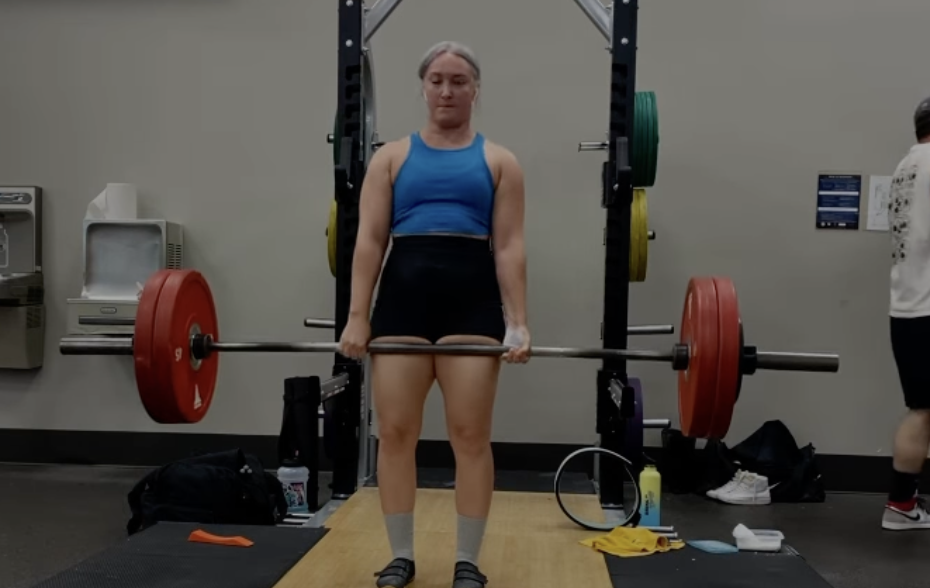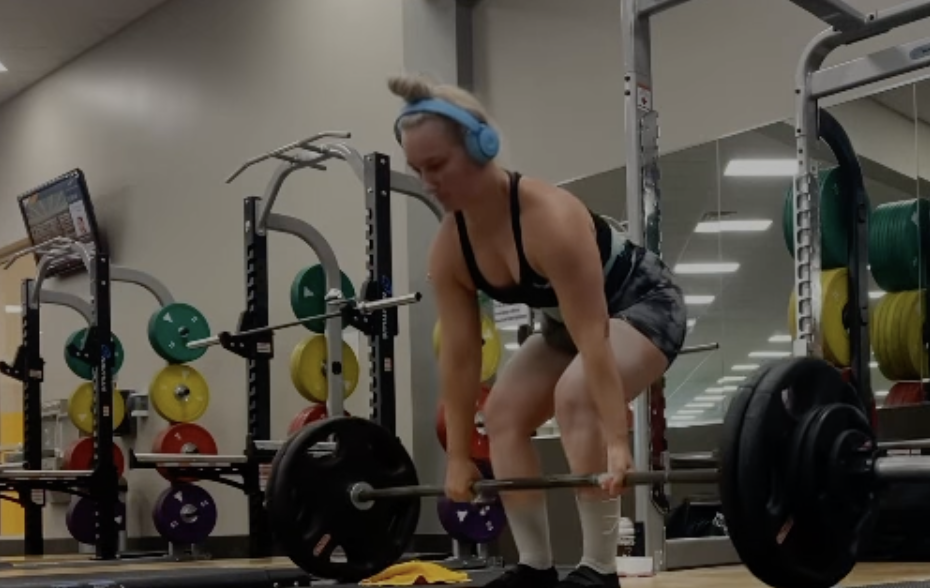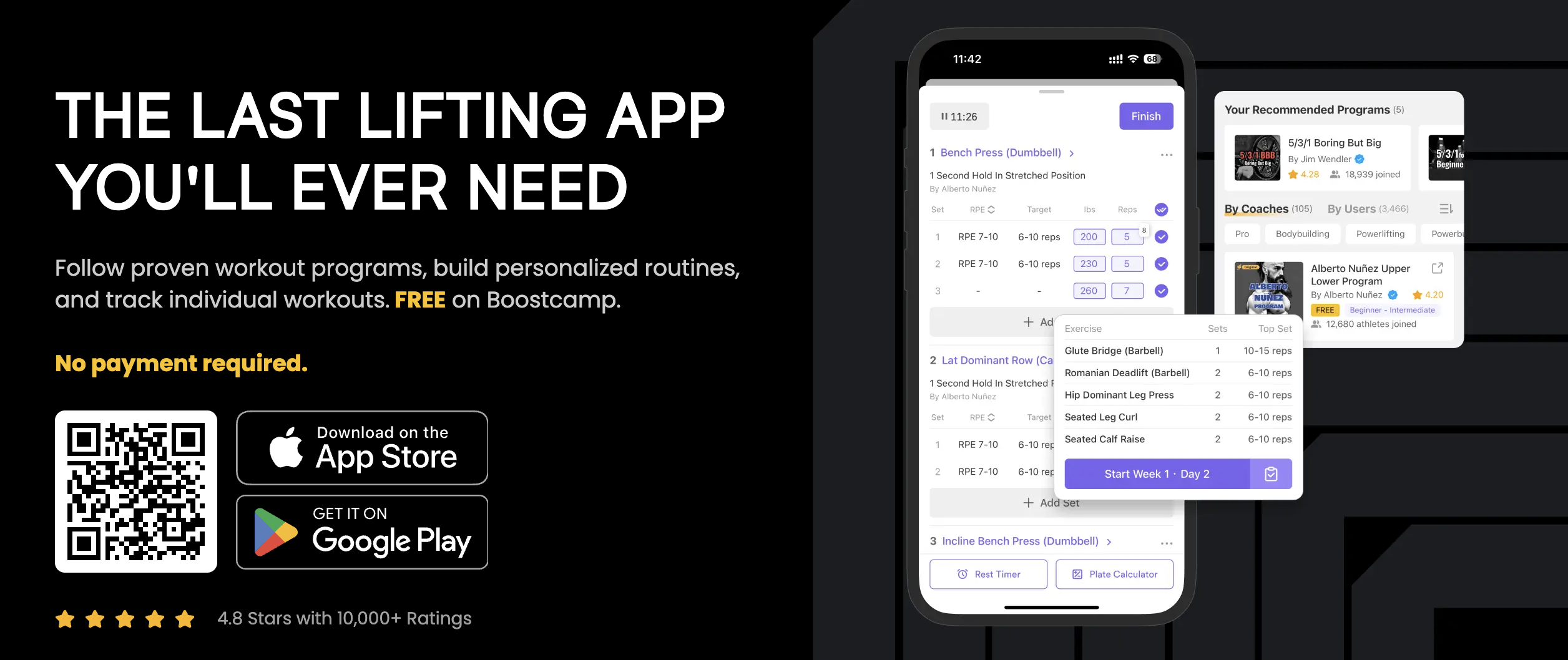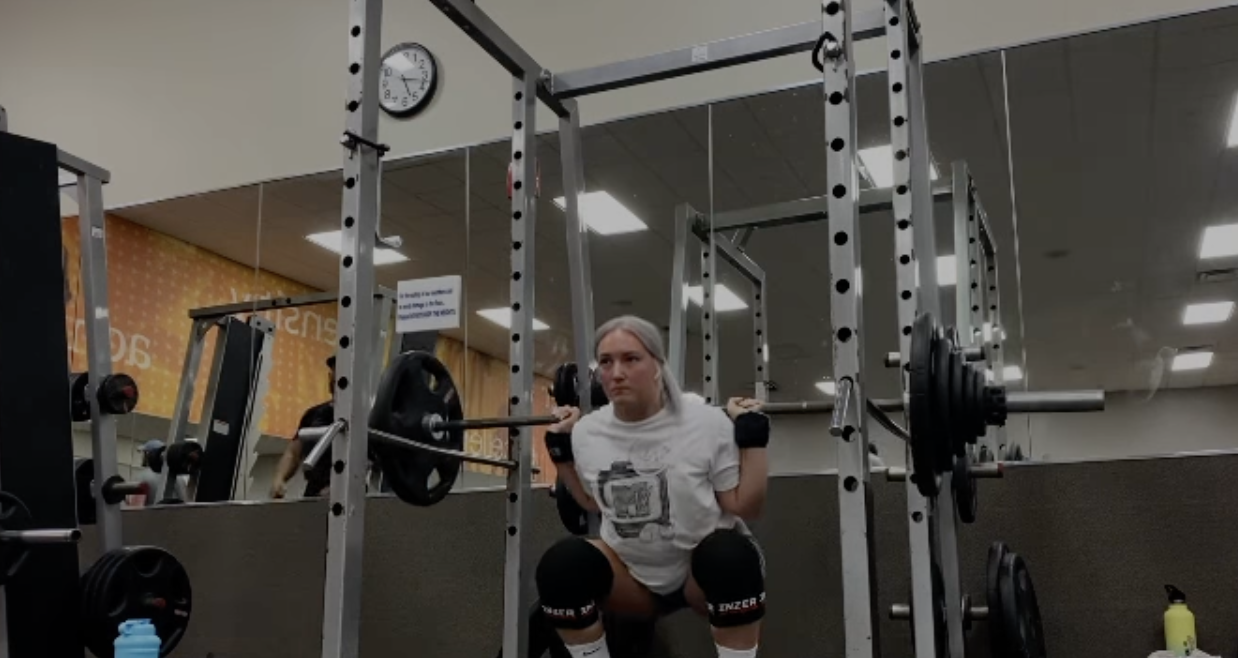How to Choose the Best Powerlifting Workout Split
Written by The Boostcamp Editors
The proper way to work your muscles as a powerlifter
Powerlifting is a strength sport that requires athletes to showcase their maximal strength in three main compound lifts, the barbell squat, the bench press, and the deadlift. There are some powerlifters who truly demonstrate incredible feats of strength that may seem impossible to some, and while genetics play a big role in someone's strength and power, by following a proper training routine you can also demonstrate some serious strength. To excel in powerlifting, one must follow a well-structured workout split and training routine that optimizes strength gains, technique improvement, and recovery. Sure, you have things like the push pull legs split and the upper lower, which you see many lifters following, but are these the best workout splits for powerlifters?
In this comprehensive guide, our team at Boostcamp will explore various powerlifting workout splits to help you determine the best one for your needs. Whether you're a novice lifter or a seasoned powerlifter looking to fine-tune your routine, we've got you covered.
The Basics of Powerlifting

Before delving into the specifics of powerlifting workout splits, let's establish some foundational knowledge. The goal of powerlifting is to hit a one rep max in the big three lifts, being the strongest person in your weight class. Powerlifting workouts typically revolve around the three core lifts: squat, bench press, and deadlift. These exercises target various muscle groups requiring strength in the following areas such as the:
Powerlifting differs from a sport like bodybuilding, where you are judged solely on your physique, and you would need to train for hypertrophy. The judges look at the amount of muscle mass and body fat you have, as well as your posing, rather than your strength. The training for bodybuilding is based more around hypertrophic movements rather than strength based movements.
Another thing worth mentioning is powerlifting also differs from weightlifting, where you are judged on your performance in the two lifts, the snatch and clean and jerk. Training for weightlifting revolves mainly around those two lifts.
Now, let's discuss the various workout splits commonly used in powerlifting.
Powerlifting Workout Splits
That being said, powerlifting workout splits just consist of workouts centered around the squat, bench, and deadlift, right? Wrong. If you are just focusing on those three exercises, you are likely to plateau in your powerlifting journey. In order to properly train as a powerlifter, you will need to focus on other things, such as accessory movements, to improve weak points and make sure that you are getting as strong as possible.
This does not mean you need to be doing all hypertrophy exercises, as you are not a bodybuilder. But, incorporating them does indeed help with your overall powerlifting training.
Let’s dive into the best workout splits for powerlifting.
Full-Body Powerlifting Workout Split
The full-body powerlifting workout split is a great option for beginners. It involves training all three powerlifting movements in a single workout session, typically three times a week, with four days to recover. Being that you will be training the squat, bench, and deadlift all in one training session, you won’t be going heavy every time and will have to focus on volume on some days.
Here's a breakdown of the advantages and disadvantages:
Advantages:
Frequent practice of the main lifts
Efficient use of time
Suitable for those with limited training days
Disadvantages:
Limited time for accessory work
Potential for overtraining
Upper-Lower Powerlifting Workout Split
The upper-lower powerlifting workout split divides your training into upper body and lower body days. Most times, this training split will consist of two upper days and two lower days each week, with three days dedicated to rest and recovery. The first upper body workout would be strength focused, with the second being hypertrophy focused. Then the same goes for the lower body days.
This split allows for more focus on specific muscle groups and accessory exercises. Here are its pros and cons:
Advantages:
Enhanced focus on muscle groups
Increased time for accessory work
Effective balance between intensity and recovery
Disadvantages:
Requires more training days
May not suit those with busy schedules
Push-Pull-Legs (PPL) Powerlifting Workout Split
The PPL powerlifting workout split is a popular choice among intermediate and advanced lifters in bodybuilding as well as strength sports. It segments training into push exercises (bench press, overhead press), pull exercises (pull-ups, deadlift, rows), and leg exercises (squats, hack squats) days.
Let's explore the benefits and drawbacks:
Advantages:
Targeted training for specific muscle groups
Improved recovery between workouts
Ideal for breaking through plateaus
Disadvantages:
Requires a higher frequency of training sessions
Longer sessions due to additional accessory work
Choosing the Best Powerlifting Workout Split

Selecting the ideal powerlifting workout split is not as simple as you may think. It largely depends on various factors, including your experience level, schedule, and training goals. Here are some key considerations to help you make the right choice:
Experience Level: Beginners may benefit from full-body or upper-lower splits to build a strong foundation, while advanced lifters can explore more specialized options like PPL.
Training Frequency: Assess how many days per week you can commit to training. This will influence your choice of split, as some workout splits require more training days than others.
Recovery: Ensure you have enough time to recover between workouts. More advanced splits often require better recovery management. Also, if you are training with heavy or high intensity and volume, you do not want to train every day.
Weak Points: Consider your weak points in the three powerlifting lifts and choose a split that allows for extra focus on those areas. For example, your triceps might be a weak point while you are bench pressing, so you may want a workout split that incorporates a larger emphasis on them.
Goals: Are you aiming to just be strong? Or do you want to compete in a powerlifting competition and win? Tailor your split to align with your specific goals.
Where and How To Find a Good Powerlifting Workout Split
Keep in mind, you want a program that is designed with your overall health and wellness in mind. There must be progressive overload, as well as deload weeks, and more to help with your overall progression. Now, you may be wondering where to find a good powerlifting workout split, and that is an easy one. The Boostcamp App has over 50 free workout programs designed by some of the best trainers. You can choose from one of those programs, or design your own track your progress, and really excel in powerlifting.
Wrap Up
In the world of powerlifting, the best workout split varies from person to person. Your choice should be based on your experience level, training frequency, recovery capabilities, weak points, and goals. Experiment with different splits, monitor your progress, and adapt as needed. Whether you opt for a full-body, upper-lower, or PPL split, consistency and dedication will be your greatest allies on the path to powerlifting success. So, choose wisely and lift with determination!
Also, be sure to follow Boostcamp on Instagram and subscribe on YouTube!


